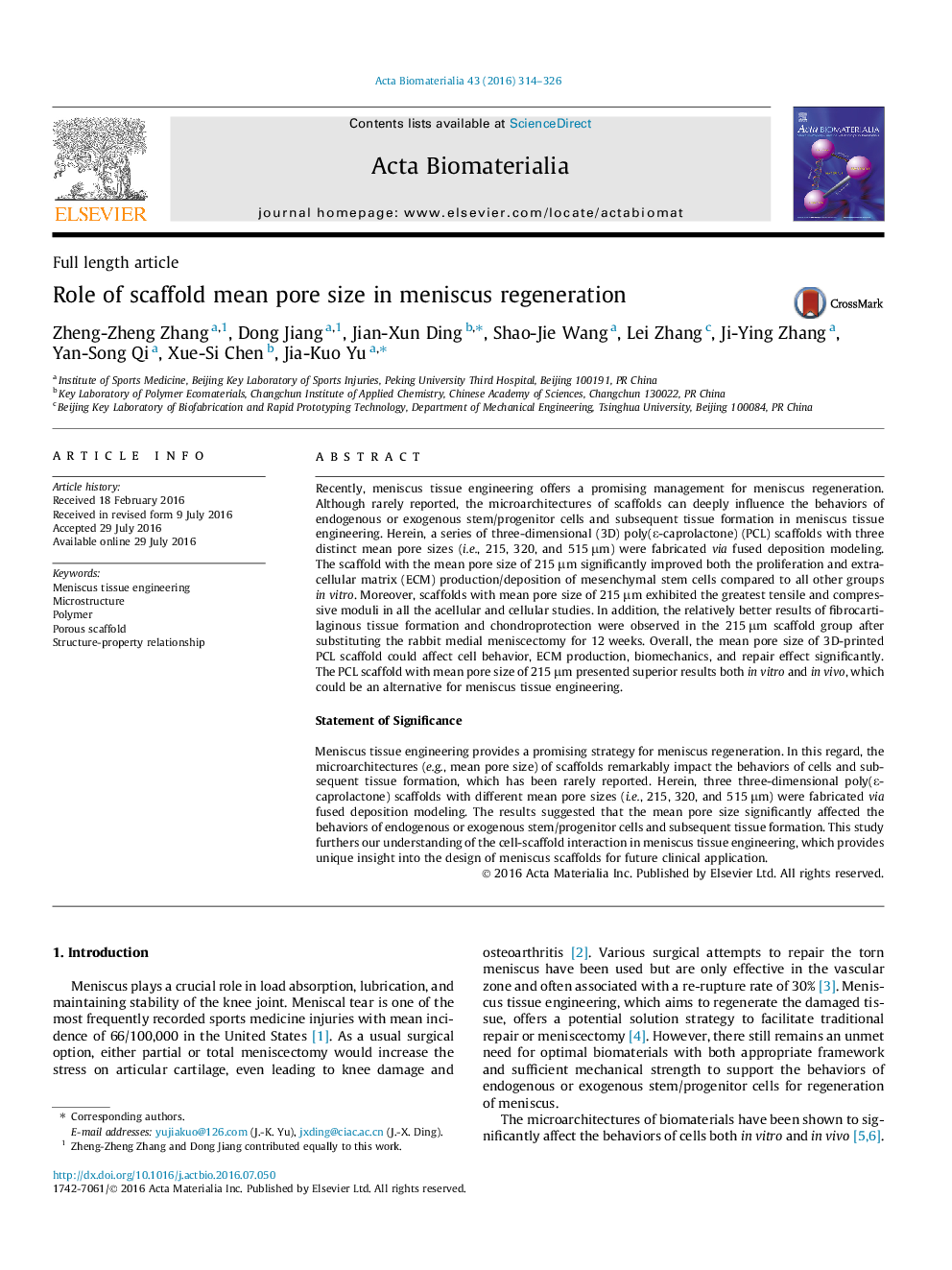| کد مقاله | کد نشریه | سال انتشار | مقاله انگلیسی | نسخه تمام متن |
|---|---|---|---|---|
| 6450110 | 1415943 | 2016 | 13 صفحه PDF | دانلود رایگان |
Recently, meniscus tissue engineering offers a promising management for meniscus regeneration. Although rarely reported, the microarchitectures of scaffolds can deeply influence the behaviors of endogenous or exogenous stem/progenitor cells and subsequent tissue formation in meniscus tissue engineering. Herein, a series of three-dimensional (3D) poly(ε-caprolactone) (PCL) scaffolds with three distinct mean pore sizes (i.e., 215, 320, and 515 μm) were fabricated via fused deposition modeling. The scaffold with the mean pore size of 215 μm significantly improved both the proliferation and extracellular matrix (ECM) production/deposition of mesenchymal stem cells compared to all other groups in vitro. Moreover, scaffolds with mean pore size of 215 μm exhibited the greatest tensile and compressive moduli in all the acellular and cellular studies. In addition, the relatively better results of fibrocartilaginous tissue formation and chondroprotection were observed in the 215 μm scaffold group after substituting the rabbit medial meniscectomy for 12 weeks. Overall, the mean pore size of 3D-printed PCL scaffold could affect cell behavior, ECM production, biomechanics, and repair effect significantly. The PCL scaffold with mean pore size of 215 μm presented superior results both in vitro and in vivo, which could be an alternative for meniscus tissue engineering.Statement of SignificanceMeniscus tissue engineering provides a promising strategy for meniscus regeneration. In this regard, the microarchitectures (e.g., mean pore size) of scaffolds remarkably impact the behaviors of cells and subsequent tissue formation, which has been rarely reported. Herein, three three-dimensional poly(ε-caprolactone) scaffolds with different mean pore sizes (i.e., 215, 320, and 515 μm) were fabricated via fused deposition modeling. The results suggested that the mean pore size significantly affected the behaviors of endogenous or exogenous stem/progenitor cells and subsequent tissue formation. This study furthers our understanding of the cell-scaffold interaction in meniscus tissue engineering, which provides unique insight into the design of meniscus scaffolds for future clinical application.
164
Journal: Acta Biomaterialia - Volume 43, 1 October 2016, Pages 314-326
